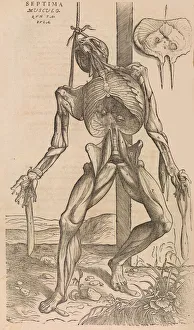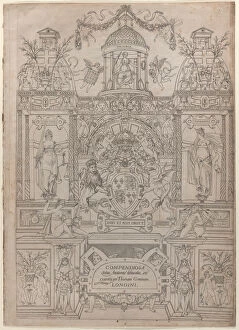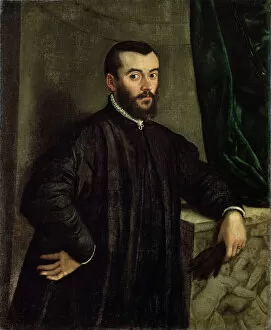Andries Van Wesel Collection
Andreas Vesalius (1514-1564), the legendary 16th century Flemish anatomist
All Professionally Made to Order for Quick Shipping
Andreas Vesalius (1514-1564), the legendary 16th century Flemish anatomist, revolutionized the scientific understanding of the human body through his groundbreaking works. Known as the "Father of Modern Anatomy," Vesalius challenged the prevailing beliefs of his time with meticulous dissections and precise illustrations. His seminal work, "De humani corporis fabrica" (On the Fabric of the Human Body), published in 1543, featured stunning engravings by artists like Steven van Calcar. The title page and dedication for the "Compendiosa totius Anatomiae delineatio" (A Compendious and Clear Picture of the Whole Anatomy) show Vesalius in the act of dissection. In the famous portrait of the physician, Vesalius is depicted in scholarly attire, holding a book and pointing to a skeleton. His discoveries, including the intricacies of the abdominal cavity and its contents, as depicted in the second plate of Book II, forever changed the field of anatomy. Vesalius' legacy continues to inspire and inform modern medical science.









